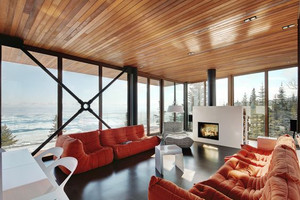
Stuv 21-125 Clad Double Face Freestanding Fireplace DF2
STUV Contemporary Wood Stoves and Fireplaces

STUV Contemporary Wood Stoves and Fireplaces


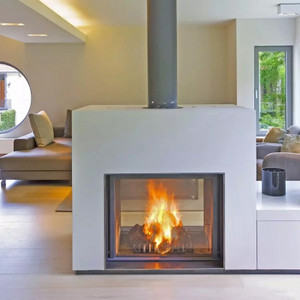






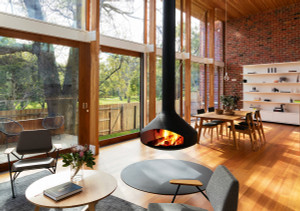


Regency Fireplace Products-Gas Inserts, Wood Stoves & More

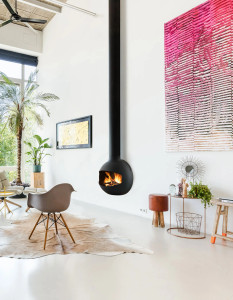
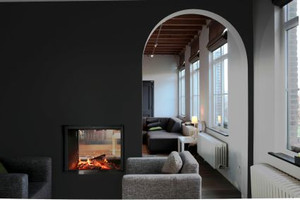


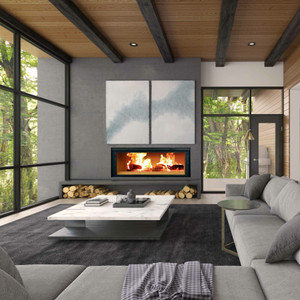


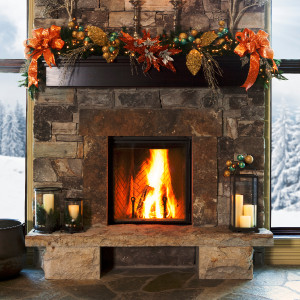


What is a wood fireplace insert?
Often called a wood stove insert, the wood fireplace insert is essentially a legless stove that is inserted into an existing fireplace. A structure designed to convert into a heat source. Unlike factory-made fireplaces, wood-burning fireplace inserts are not designed to be built into just the assembled walls.
Wood-burning fireplace inserts must be used with properly rated artificial or brick fireplaces. An outer frame called a skirt helps cover the gap between the edge of the insert and the chimney. Depending on your installation, you may need a flexible liner to resize your fireplace's large flue. Due to the high efficiency of the fireplace insert, the exhaust gas temperature is low. Therefore, a smaller trigger is required for the insert to function properly.
Now you know the difference. A wood-burning fireplace is a brick or prefabricated firebox that serves as a burning chamber for wood. But a wood-burning fireplace insert is really like a baseless stove designed to fit in your existing fireplace.
There's a timeless allure to a crackling fire, which is why wood-burning fireplaces have been in the heart of countless homes for centuries. These classic fixtures not only provide warmth but also fill a room with a cozy atmosphere that's hard to beat. In this complete guide to wood-burning fireplaces, we'll examine the old-school charm and practicality of these fireplaces. We'll discuss whether investing in one is worth it, where you can buy a wood-burning fireplace, which type of wood is best to fuel it, and how to use it effectively.
In an age of modern central heating systems and electric fireplaces, you may wonder whether a wood-burning fireplace is worth the effort and expense. The answer essentially depends on your preferences and the atmosphere you want to create in your home.
Wood-burning fireplaces bring a unique charm and character to your living space that's hard to reproduce with other heating methods. The sight and sound of crackling flames, the smell of burning wood, and the comforting warmth it provides create a distinct ambiance. It's not just about heating; it's about the entire experience.
While wood-burning fireplaces can be a tad more work than turning up a thermostat, they provide a connection to nature and the simple pleasure of tending to a fire. It's a time-honored tradition that can bring family and friends together.
Where cost is concerned, wood can be more affordable than other heating fuels. This makes wood-burning fireplaces cost-effective in the long run. What’s more, they can be used during power outages, so they provide a reliable source of heat when you need it most. But it's important to figure in the cost of purchasing or maintaining the fireplace and the chimney (and time spent gathering and storing wood).
Yes, you can buy wood-burning fireplaces, and they come in a selection of styles and sizes to fit different needs and preferences. If you’re looking for wood-burning fireplaces, here are a few types to consider.
Masonry fireplaces are traditional fireplaces built from brick, stone, or concrete. They provide a timeless and rustic look. Masonry fireplaces are known for their durability and heat-retaining qualities, but they can be pricey to install and may require considerable space.
Prefabricated fireplaces, also known as factory-built fireplaces, are pre-made units that can be easily installed in your home. They are a more budget-friendly option and provide flexibility in terms of location and design.
Wood fireplace inserts are a great option if you already have an existing fireplace but want to convert it into an efficient wood-burning model. They fit directly into your existing fireplace and provide better heating efficiency.
Zero-clearance fireplaces are designed to be installed directly against combustible materials, making them good for tight spaces or rooms with limited wall clearance. They frequently come with insulated liners for better safety and efficiency.
There are also wood-burning fireplace inserts and any number of freestanding stove models.
When buying a wood-burning fireplace, think about the type that best fits your home's design and your heating needs. It's also important to check local building codes and regulations. They might dictate the type of fireplace you can install and any required safety measures.
The type of wood you use in your wood-burning fireplace can greatly impact the efficiency, safety, and enjoyment of your fire. Below are some things to keep in mind when choosing the best wood for your fireplace.
Hardwood (like oak, maple, and hickory) is often preferred for wood-burning fireplaces. It burns slower, producing more heat and less creosote buildup, which can be a safety hazard. Softwood (like pine and fir) burns faster and can lead to more creosote buildup.
Wood should be well-seasoned. That means it has been properly dried for a year or more. Seasoned wood burns more efficiently, producing less smoke and creosote. It's also easier to start and maintain a fire with seasoned wood.
Wood should be cut into the right size for your fireplace or stove. Smaller pieces are easier to ignite, while larger logs can provide longer-lasting heat. Splitting the wood into smaller pieces can improve combustion and reduce smoke.
Never burn wood that has been treated, stained, or painted. Materials such as these can release harmful fumes when burned. Choose wood that is easily available in your area to minimize transportation costs and reduce your carbon footprint.
When you're in doubt about a particular type of wood, check your wood fireplace buying guide or a local firewood supplier for advice. A well-informed wood choice can make your wood-burning fireplace experience safer, more efficient, and more enjoyable.
Getting the most from a wood-burning fireplace, and using it safely, requires knowledge and attention to detail. Here are the key steps to better guarantee a great wood-burning experience:
Wood-burning fireplaces have a timeless appeal that can add warmth and charm to your home. While they require a bit of effort and maintenance, the ambiance they create is worth the investment for many homeowners. Whether you choose a masonry fireplace, a prefabricated unit, or a wood fireplace insert, the type of wood you use, and how you use your fireplace can influence your experience. By following safety guidelines and maintaining your fireplace, you can enjoy the warmth and comfort of a wood-burning fireplace for years to come.
If you're thinking about adding one to your home, look at a wood fireplace buying guide and check out the various types of wood-burning fireplaces for sale to find the perfect fit.
To find out more about our wood fireplaces, feel free to contact us at +1 (800) 969-9592 today.